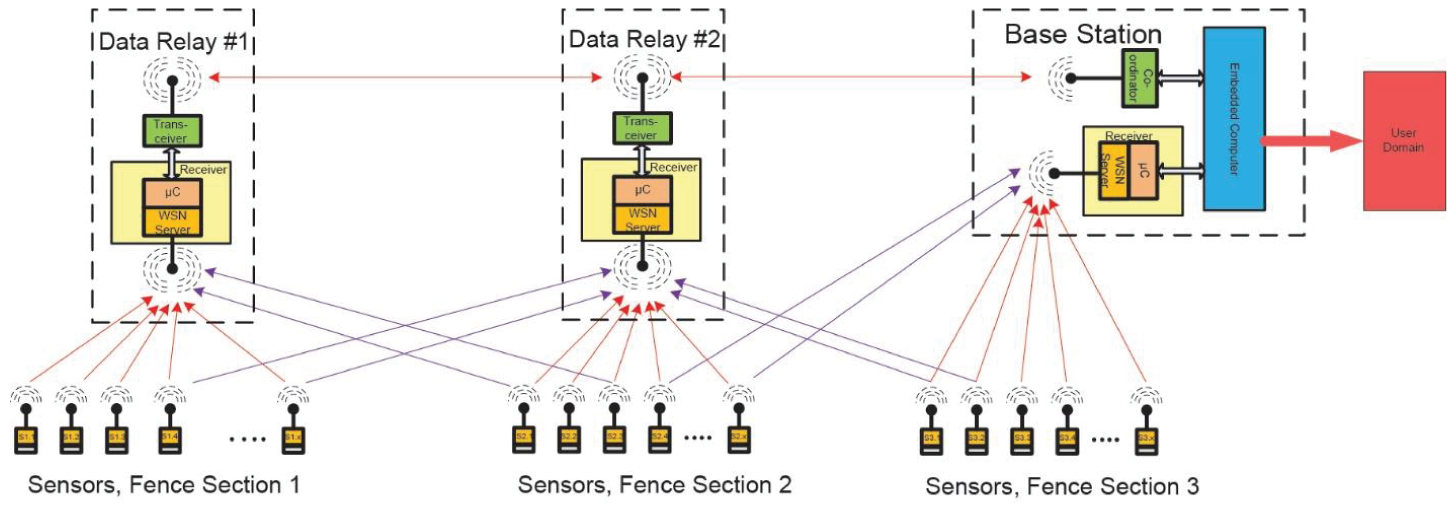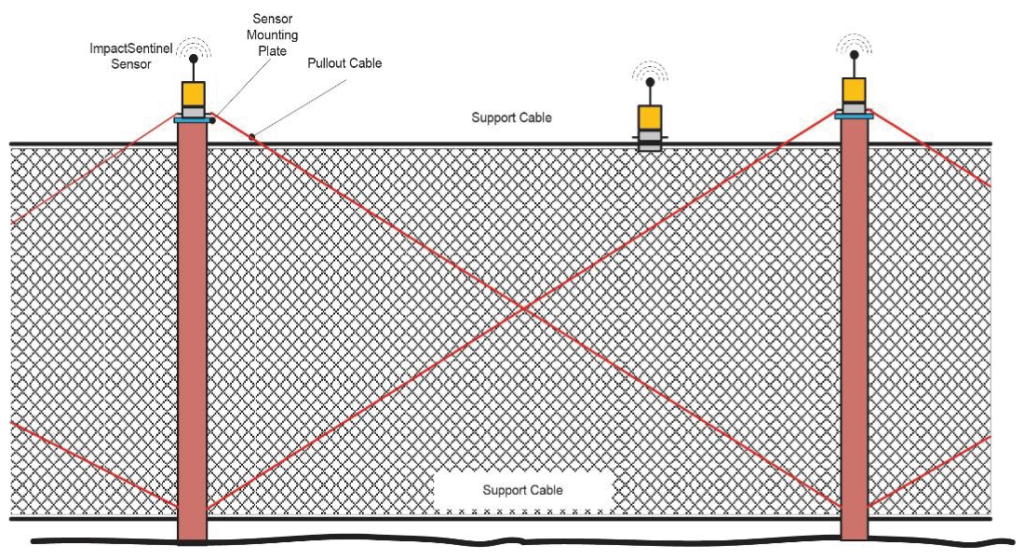Setup
A typical ImpactSentinel system can consist of three main components: The Base Station, Data Relay(s) and sensors.
A quick overview, which is illustrated in the picture below shows that when a sensor is triggered, the signal is relayed through the Data Relay to the Base Station where it is processed, evaluated and becomes informative.
Typical ImpactSentinel network topology with redundancy
Sensors have a large signal range and will often be covered by more than one Data Relay and/or Base Station, thus causing a redundancy in the chain of communication.
Chain of communication:

This fail-safe approach of using Data Relays for transmission of signals, compared to sensor-to-sensor (i.e. no data relay) transmission has proven to be superior.
With a sensor-to-sensor approach, if there is a break in the chain of communication, i.e. one of the sensors down/ not working will prevent preceding sensors from communicating with the base station. Effectively shutting down warning and monitoring capabilities.
The Data Relay–approach also has the added benefit that it can monitor greater distances of barriers. Plus, it can also monitor fragmented barrier formations.
Typical ImpactSentinel sensor setup on dynamic/static barriers with physical redundancy
Sensors can be mounted on poles and/or steel cables

This setup has a redundancy plan as each section of barrier has threaded cable connected to two or more sensors.
